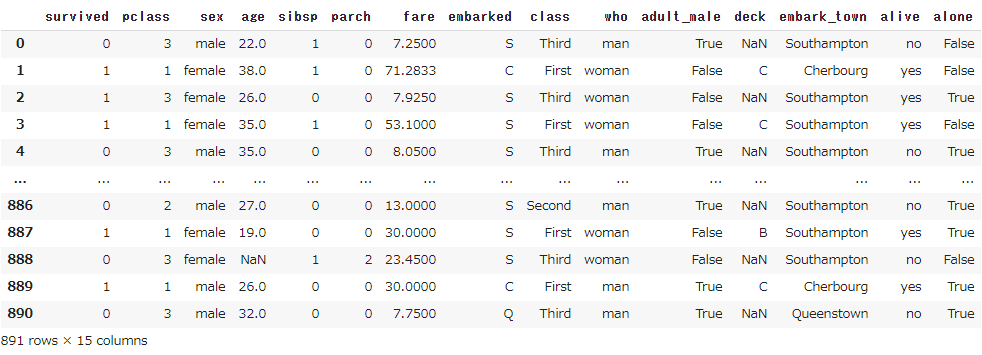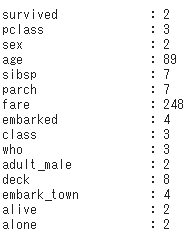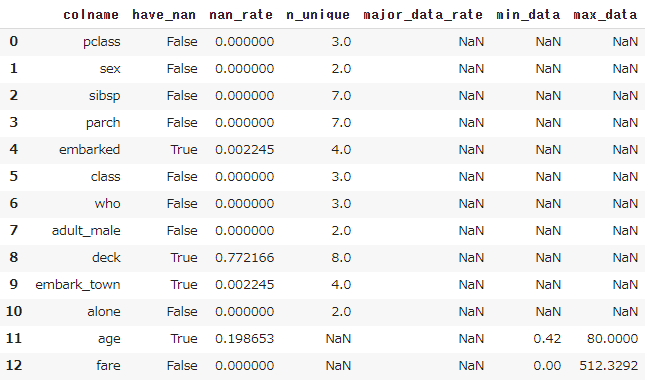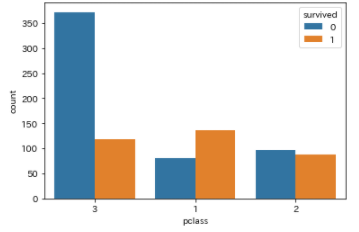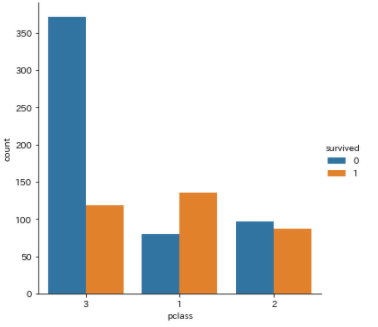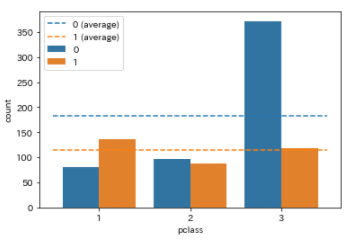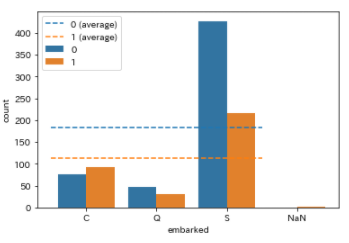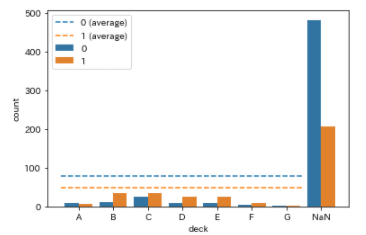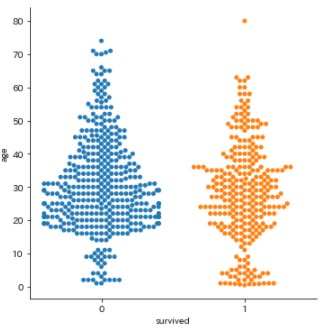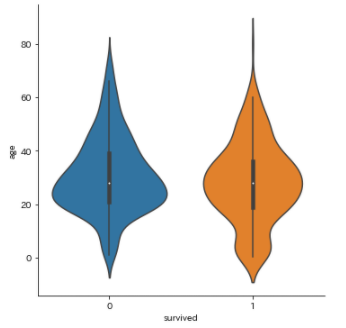この記事の目的
データ分析の最初に行う, EDA(探索的データ解析)においてよく使うコードをメモしておく.
今回は特に, 分類問題(タイタニック号の乗客生存予測など)の場合を想定している.
コード解説
ライブラリ読み込み
import numpy as np
import pandas as pd
pd.set_option('display.max_columns', 100)
import seaborn as sns
import matplotlib.pyplot as plt
import japanize_matplotlib
import os
from tqdm import tqdm
import warnings
warnings.filterwarnings('ignore')
データの読み込み
df = sns.load_dataset("titanic")
df = df.replace(float("nan"),np.nan) #後のunique()の計算のため
df
ぞれぞれの変数の中身を確認
for colname in df.columns:
uni = len(df[colname].unique())
print("{0:<20} : {1}".format(colname, uni))
目的変数の設定, 変数の型定義
target="survived"
cate_list = ["pclass", "sex", "sibsp", "parch", "embarked", "class",
"who", "adult_male", "deck", "embark_town", "alone"] #aliveは無視
num_list = ["age", "fare"]
all_list = cate_list + num_list
NaNなどの確認
こちら の記事を参照
カテゴリカルデータ
まず簡単に確認するだけなら, 以下の2種類のようにかける.
sns.countplot(x="pclass", hue=target, data=df)
sns.catplot(x="pclass", hue=target, data=df,kind="count")
さらに, NaNや平均についても知りたい場合は以下の関数を定義して使う.
def category_plot(x, hue, data, order=[]):
#NaNを文字列に
flag_nan = False
data[x] = data[x].astype("str").replace("nan","NaN")
if "NaN" in data[x].values:
flag_nan = True
x_unique_list = sorted(data[x].unique())
x_unique_len = len(x_unique_list)
x_unique_len_dropna = x_unique_len-1 if flag_nan else x_unique_len
hue_unique_list = sorted(data[hue].unique())
hue_unique_len = len(hue_unique_list)
if order==[]:
if flag_nan:
order = x_unique_list
order.remove("NaN")
order = order + ["NaN"]
else:
order = x_unique_list
else:
pass
colors = plt.get_cmap("tab10").colors
sns.countplot(x=x, hue=hue, data=data, order=order,hue_order=hue_unique_list)
for i,ui in enumerate(hue_unique_list):
h = data.loc[data[hue]==ui,:].shape[0] / x_unique_len_dropna
plt.plot([0-0.5,x_unique_len_dropna-1+0.5],[h,h],color=colors[i], linestyle="dashed", label="{0} (average)".format(ui))
plt.legend()
plt.show()
category_plot(x="pclass", hue=target, data=df)
category_plot(x="embarked", hue=target, data=df)
category_plot(x="deck", hue=target, data=df)
数値データ
以下の2種類のプロットを見れば大体OK
sns.catplot(x=target, y="age", data=df,kind="swarm")
sns.catplot(x=target, y="age", data=df,kind="violin")
参考
seaborn:seaborn.catplot
seaborn:seaborn.countplot
